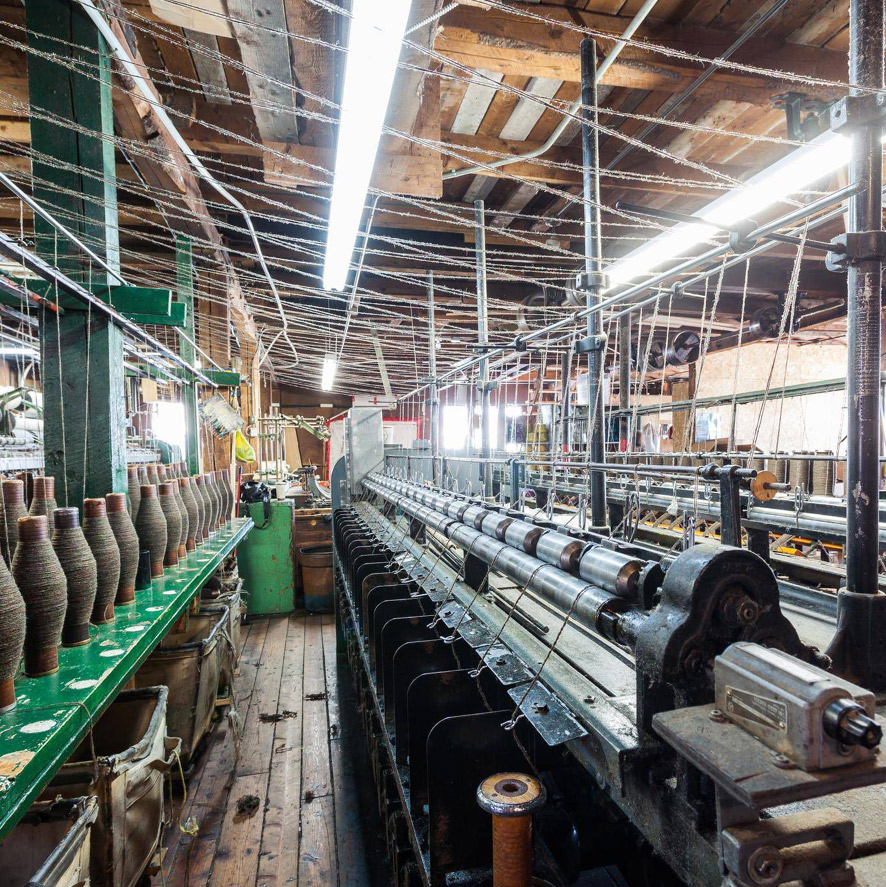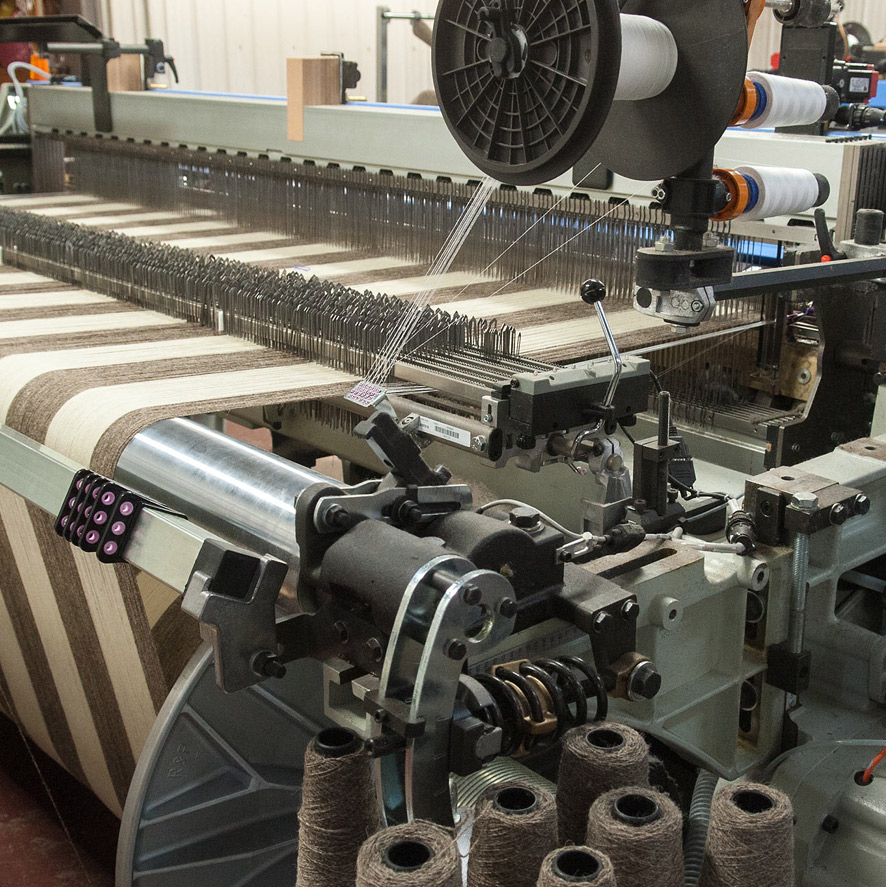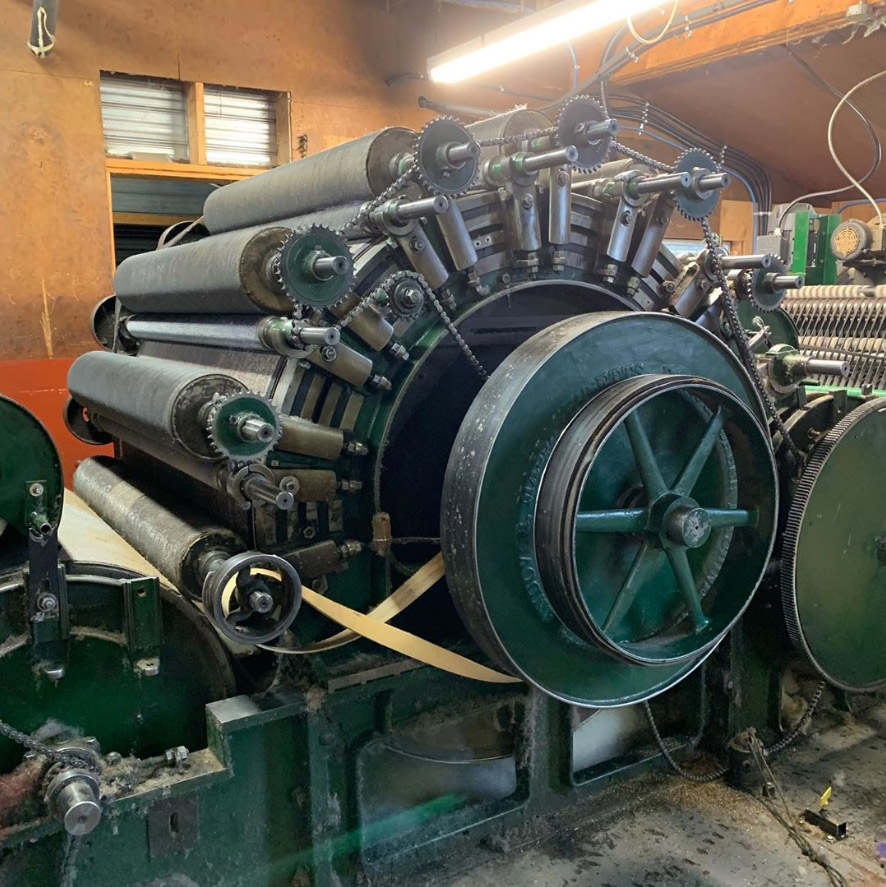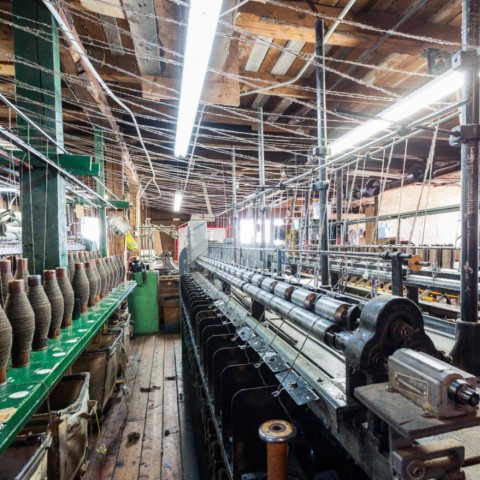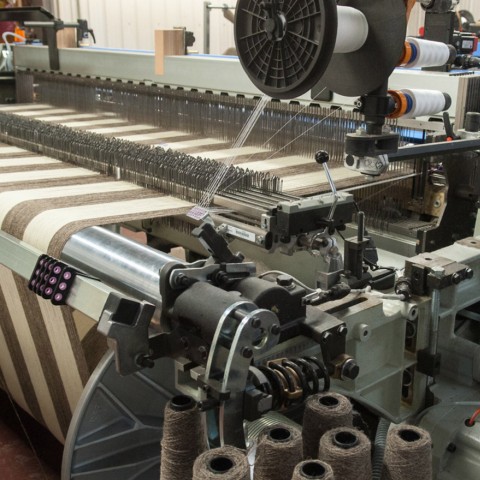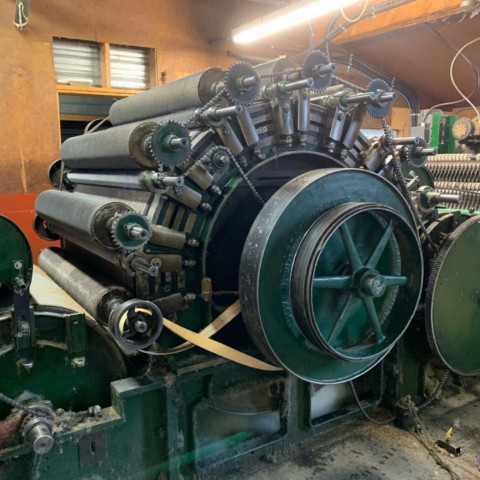The products start as raw wool, purchased in the Atlantic provinces.
First the wool is put through a washing machine that was built in 1949 and washed with liquid soap and hot water. After the wool is washed, it weighs almost forty percent less, now that the dirt and grease are out. The wool is then dried in the wool dryer.
The carding machines which combs and brushes the wool, is made of more than a dozen wire bristled rollers through which the wool is fed.
The wool is then spun into thread on a 128-bobbin spinning frame. The wool is twisted into various plies, 2- and 3-ply are most popular. The mill will also fill orders for 1-5 ply yarn.
If the wool is to become yarn, it is wrapped into four-ounce skeins. If the wool is becoming someone’s blanket, it is warped onto a loom. Sixteen hundred warp threads make up a blanket, and each one is fed through a loom.
After the blankets are preshrunk in steaming hot soap and water, they are hung to dry in the dry house, and brushed again to make them fluffy, then hemmed, folded and packaged for sale or shipping.

